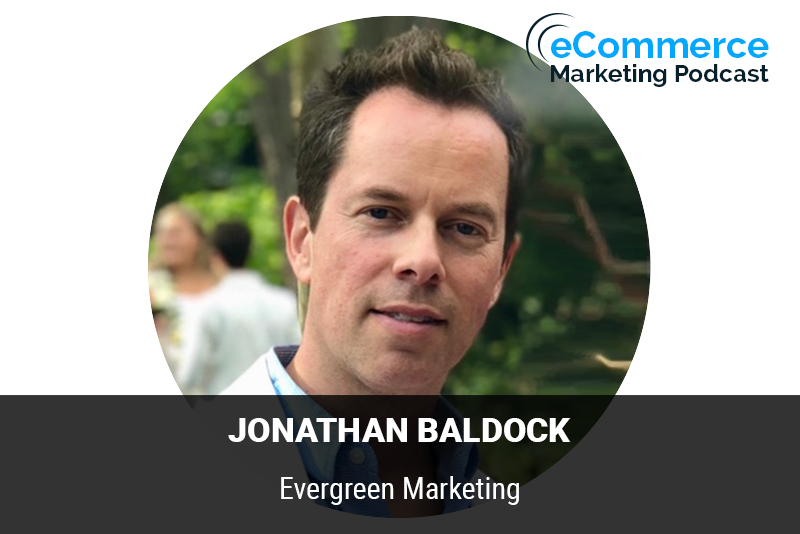
eCommerce Marketing Podcast
The eCommerce Marketing Podcast walks you through everything that goes into ecommerce marketing — from inbound marketing to paid advertising to conversions. Learn the strategies top marketing experts use to grow their businesses.
How to Create an Evergreen Marketing Channel – with Jonathan Baldock
byArlen Robinson
Marketing Strategies and Topics Covered in this Episode:
- Why exactly is Evergreen Marketing
- What are the benefits of Evergreen Marketing
- What specific marketing efforts can you implement for evergreen marketing
- Businesses that have been successful with evergreen marketing and the specific things they have done to be successful

In this episode of the eCommerce Marketing Podcast, host Arlen Robinson interviews Jonathan Baldock, an advisor at Social HP with a decade of experience at LinkedIn. Jonathan shares his expertise in developing evergreen marketing channels and discusses strategies to maintain a continuous marketing presence.
Key Takeaways:
- Introduction to Jonathan Baldock (00:01:46)
- Jonathan’s background at LinkedIn and his current role at Social HP.
- Growth of LinkedIn from 600 employees to 13,000 and from 80 million members to over 750 million during his tenure.
- What is Evergreen Marketing? (00:05:29)
- Definition: Evergreen marketing involves maintaining a constant, ongoing marketing channel that never turns off, unlike campaign-based marketing.
- Comparison to traditional marketing: Focuses on long-term storytelling rather than short-term campaigns.
- Benefits of Evergreen Marketing (00:12:29)
- Building brand awareness over time.
- Keeping your brand in front of your audience consistently.
- Leveraging employees to extend reach, especially on LinkedIn.
- Leveraging Employees for Evergreen Marketing (00:10:51)
- Utilizing employees’ LinkedIn connections to amplify brand messaging.
- Example: A company with 50 employees can reach the same audience as a company with 2,000 employees if all employees share updates.
- Content Strategy for Evergreen Marketing (00:12:52)
- Importance of mixing content: Thought leadership, industry news, and company updates.
- Ideal content ratio: 3 thought leadership pieces, 2 industry pieces, 1 company update.
- Using Evergreen Marketing to Measure Success (00:15:13)
- Metrics: Number of engagements, social selling leads, brand reputation, and talent acquisition.
- Building familiarity with your brand to ease the sales process and improve recruitment.
- Creating Value-Driven Content (00:17:23)
- Importance of providing value rather than just promoting products.
- Examples of value-driven content: Industry insights, thought leadership articles.
- Content Reuse Across Channels (00:19:20)
- Repurposing LinkedIn content for email campaigns to reach a broader audience.
- Ensuring content is targeted and not overly sales-focused.
- Successful Evergreen Marketing Examples (00:21:31)
- PepsiCo’s effective storytelling across various platforms.
- Building brand reputation and engaging employees in advocacy.
Bullet Points of Key Takeaways with Timestamps:
- [00:01:46] Introduction to Jonathan Baldock and his background.
- [00:05:29] Definition and concept of evergreen marketing.
- [00:10:51] Leveraging employees for extended reach on LinkedIn.
- [00:12:52] Ideal content strategy and ratio for evergreen marketing.
- [00:15:13] Metrics to measure success in evergreen marketing.
- [00:17:23] Creating value-driven content to engage your audience.
- [00:19:20] Repurposing LinkedIn content for email campaigns.
- [00:21:31] Example of PepsiCo’s successful evergreen marketing.
Guest Information:
Jonathan Baldock
- Advisor at Social HP
- Connect on LinkedIn: Jonathan Baldock











